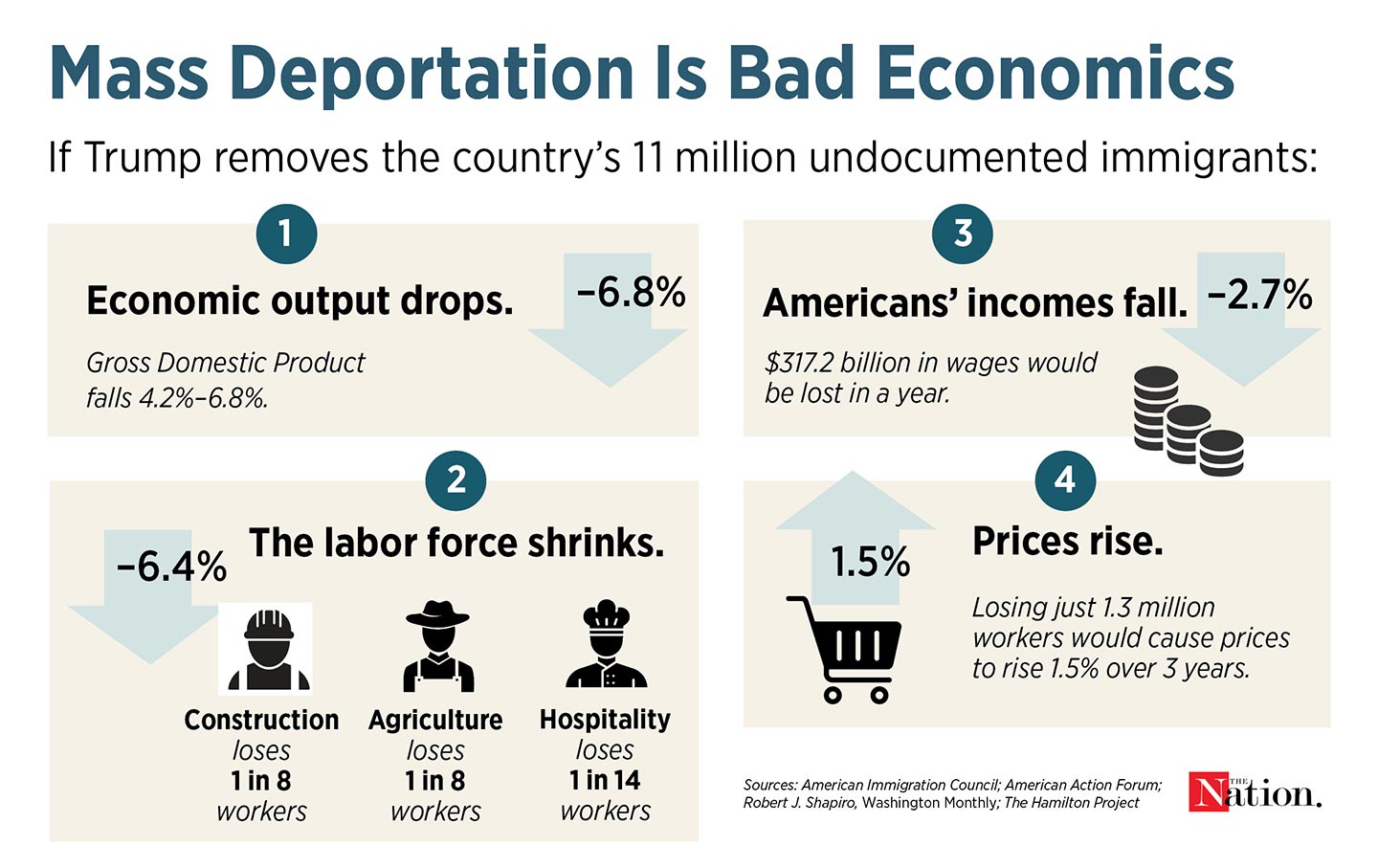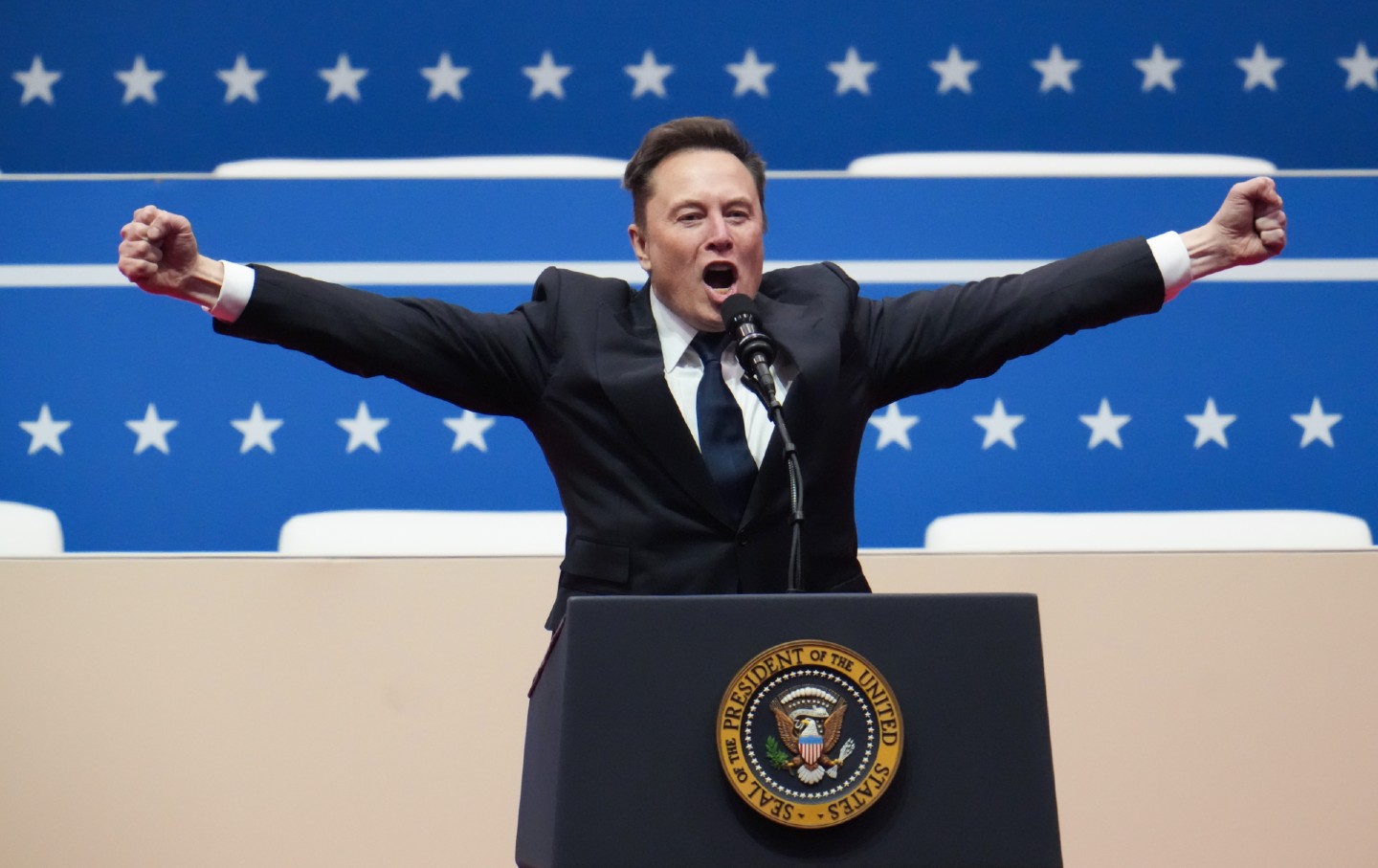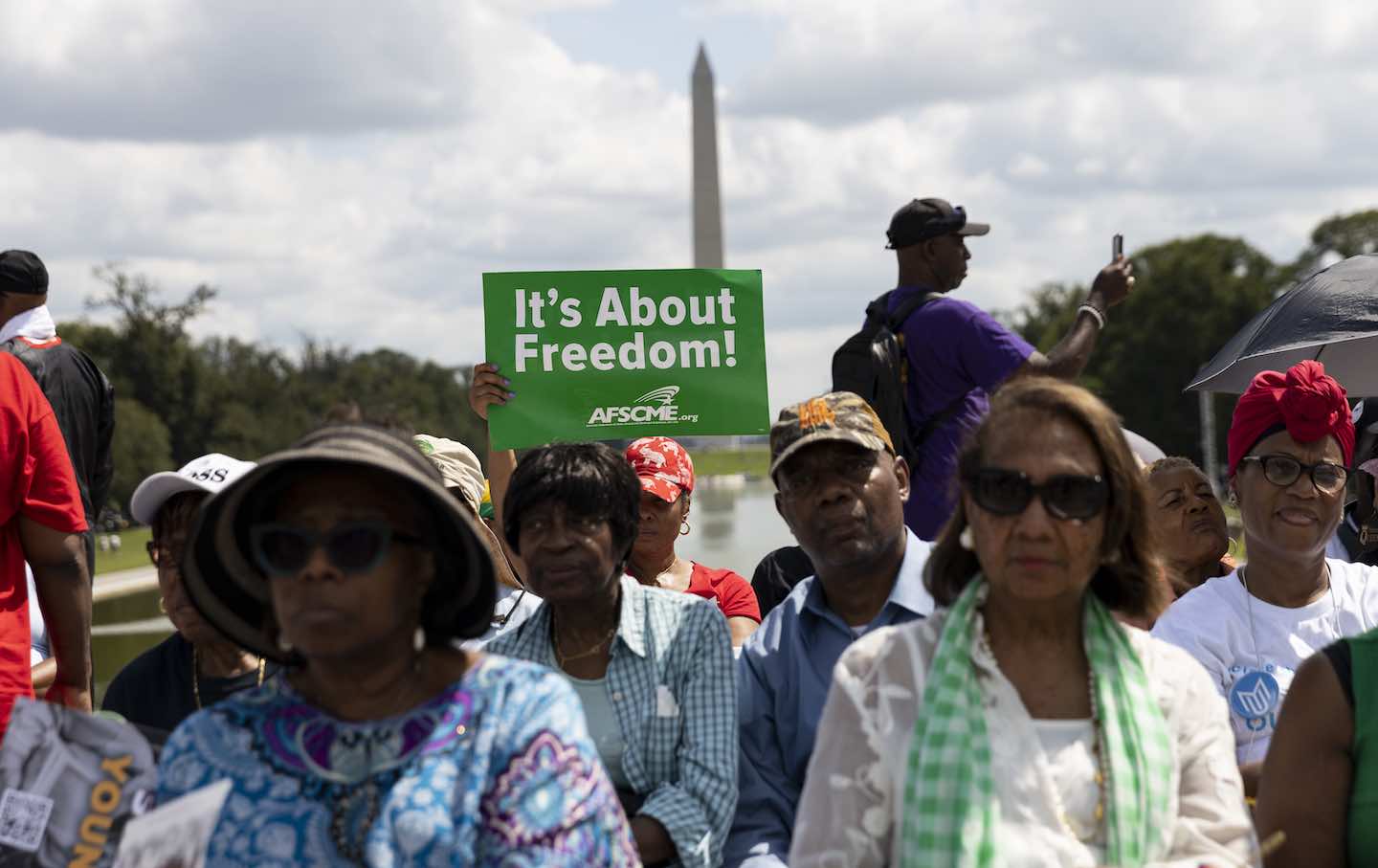
Some Inconvenient Truths About Antisemitism and the Left Some Inconvenient Truths About Antisemitism and the Left
By ceding the space on antisemitism—responding when we are accused of it, but not taking up the fight against it as our cause—we’ve created a strategic opportunity for the right.
Feb 14, 2025 / Rachel Shabi

Mass Deportations Aren’t Just Evil. They’re Also Terrible Economics. Mass Deportations Aren’t Just Evil. They’re Also Terrible Economics.
Immigrants don’t steal citizens’ jobs and wages. They grow the economy for all.
Feb 14, 2025 / Column / Bryce Covert

Barbed Wire Barbed Wire
Trump’s immigration policies recall the camps of Nazi Germany.

Elon Musk’s Vision Is Coming Into Focus—and It Looks a Lot Like Neo-Apartheid Elon Musk’s Vision Is Coming Into Focus—and It Looks a Lot Like Neo-Apartheid
Apartheid was, first and foremost, a business plan—one that the South African–born Musk seems to be reworking for the modern age.
Feb 13, 2025 / Elie Mystal

DEI Was Never Going to Save Us DEI Was Never Going to Save Us
Trump’s racist attacks on diversity initiatives must be resisted—but that shouldn’t prevent an honest conversation about the limits of what DEI can actually achieve.
Feb 13, 2025 / Malaika Jabali

Immigrant Resilience Immigrant Resilience
Illegal raids at workplaces, schools, and churches are instilling fear in the most vulnerable communities, but immigrant resistance is growing stronger.
Feb 7, 2025 / OppArt / Andrea Arroyo

The White Nationalist in Chief’s Return to Power The White Nationalist in Chief’s Return to Power
No president in the post-civil-rights era has been as racially aggressive as the now-47th president.
Feb 7, 2025 / Clarence Lusane for The Nation

Senate Democrats Are Attacking Tulsi Gabbard for the Wrong Reasons Senate Democrats Are Attacking Tulsi Gabbard for the Wrong Reasons
Preferring to defend spy agencies and line up behind the hawkish consensus, the bipartisan elite ignores the director of national intelligence nominee’s rampant Islamophobia.
Jan 31, 2025 / Jeet Heer

The United States Has Always Been a Divided Nation The United States Has Always Been a Divided Nation
Coming to terms with this reality will allow us to strengthen and maximize the full power and potential of our nation—the one dedicated to the proposition of equality.
Jan 30, 2025 / Steve Phillips

Keep Going: Our Mission Has Not Changed Keep Going: Our Mission Has Not Changed
We owe it to our forebears, our families, our communities, and future generations to keep fighting for just causes, writes Nina Turner. We, too, shall overcome.
Jan 24, 2025 / Nina Turner
